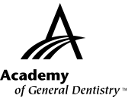|
Exercise No. 367
Subject Code: 017
Dental Materials
The 15 questions for this exercise are based on the article, Nanoleakage of fiber posts luted with different adhesive strategies and the effect of chlorhexidine on the interface of dentin and self-adhesive cements, on pages 31-37. This exercise was developed by Kim Capehart, DDS, MBA, PhD(c), in association with the General Dentistry Self-Instruction committee.
|
Reading the article and successfully completing this exercise will enable you to:
- identify the characteristics of fiber posts and dentin using various adhesive strategies;
- identify the effects of various luting systems and chlorhexidine (CHX) in dentin; and
- recognize the advantages of the various luting systems used for luting fiber posts.
|

